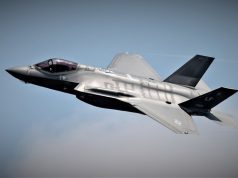The US Air Force’s first overseas-based F-35A Lightning II squadron has received a new nickname as it prepares to start operations from its new base by the end of the year.
The 48th Fighter Wing sought help from the public to name the unit.
Suggestions were originally submitted in the fall of 2020, and were narrowed down from 700 unique names to five finalists. The winning proposal was the “Valkyries,” besting four other choices – Archangels, Sabres, Sentinels and Swordsmen.
In Norse mythology, Valkyries are female figures who choose those that will live or die in battle. RAF Lakenheath is in the east of the United Kingdom, an area with extensive Viking and Norse history. Additionally, the 495th FS motto, “Mala Ipsa Nova,” in Latin, means “Bad News Itself.”
Both factors emphasize “Valkyries” as an extremely suitable nickname for the UK-based unit, 48th Fighter Wing public affairs said in a release.
“‘Valkyries’ epitomizes the force’s move toward more inclusivity and equally represents the fifth-generation stealth fighter’s air superiority,” said Lt. Col. Ian McLaughlin, the incoming 495th FS commander. “I am honored to be the first commander of the initial US Air Force overseas-based F-35A unit. Like the Valkyries themselves, we’ll be vital to determining the fate of our adversaries in the battlespace.”
The first F-35As are scheduled to arrive at RAF Lakenheath in late 2021. The base was selected to host the first US F-35A squadrons in Europe based on very close ties with the RAF, existing infrastructure and combined training opportunities.
“The amount of support we received, and continue to receive, from the community both here and back home has been overwhelming and highly appreciated,” said Col. Jason Camilletti, 48th FW commander. “Basing F-35s at RAF Lakenheath will be a game changer as it will allow us to further advance interoperability with our European teammates, and is a visible demonstration that we and all of NATO will continue to own the skies.”



























